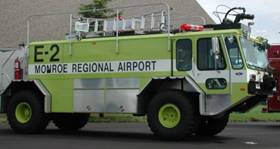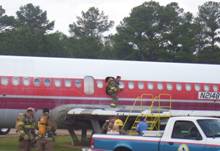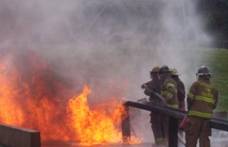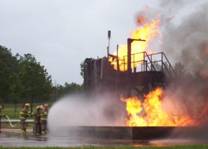

|
“Our Mission Is To Provide Quality Public Service, Public Education, and Professional Emergency Response” |
|
Monroe Fire Department 1810 Martin Luther King Blvd Monroe, LA (318)329-2474 Jimmie R. Bryant, Fire Chief |
| EMSNetwork Latest News |



|
International Association of Fire Chiefs |
|
International Association of Firefighters |

|
National Association For Search and Rescue |

|
National Association of Emergency Medical Technicians |

|
National Fire Fighter Near-Miss Reporting System |

|
The ARFF (Aircraft Rescue and Fire Firefighting) Unit for the Monroe Fire Department is responsible for protecting life and property at the Monroe Regional Airport. It has six intersecting runways, one being 7507 x 150 feet and two being 5000 x 150 feet. Service is provided at the appropriate Airport Index level, which is index B as defined in the guidelines set by the FAA.
|
|
Monroe Fire Department—Aircraft Rescue Fire Fighting |
|
The ARFF station is located at Monroe Fire Station 7 at the north end of the Monroe Regional Airport. It is staffed with ARFF specialists with many being medically certified as EMT-Basic and EMT-Intermediate as well as being trained firefighters.
Equipment located at the station includes a 1991 Titan III 4X4 Crash/Rescue Truck and a 1998 Titan III 4x4 Crash/Rescue Truck. The Titans are equipped with 1,500 gallons of water, 200 gallons of 3% AFFF foam concentrate and 500 pounds of Purple K Dry Chemical extinguishing agent. Both units contain rescue extrication tools and medical equipment. Both units have roof turrets that are rated at 750 gpm and bumper turrets rated at 300 gpm respectively. Both also have two hand lines rated at 125 gpm. Nozzles mounted under the truck are used to protect the tires during fuel spills.
|
|
With all nozzles open on high flow, the 1,500 gallons of water can be expelled in 1:07 minutes. Distance for water from the roof turret is wind variable, but can reach between 170 to 210 feet on solid stream and about 80 feet on dispersed.
Also located at the airport fire station is a mass casualty incident ambulance equipped with enough EMS equipment to manage up to 25 patients.
|
|
All personnel assigned to the airport have received training in basic Aircraft Rescue Firefighting. Each person participates in monthly training sessions which include, but are not limited to, topics outlined by the FAA. All personnel participate in monthly continuing education ARFF refresher courses, from one or more of eleven ARFF subjects, conducted by Monroe Fire Department qualified personnel. Outside instructors are also utilized when available.
Once each year, ARFF personnel participate in live flammable liquids fire suppression training at the Mississippi State Fire Academy. Once every three years, personnel participate in a multiple casualty exercise at the Monroe Regional Airport.
|

|
Engine 62, “E-2” - Aircraft Rescue Fire Fighting (ARFF) Apparatus |
|
Duties at the airport include assisting the Fire Prevention/Investigation Division with inspections of all fuel storage, fuel dispensing and fuel trucks located on the grounds. Runway lights, taxiway lights, wind sock lights, and signs are checked regularly for proper function.
Air traffic consists of aircraft from Delta, Continental, American Eagle, and Northwest as well as various privately owned planes and jets. Military planes are also a common sight varying from the F-18 Hornet, Blackhawk Helicopters, to the C-130 Hercules. ________________________________________________________________________________________ This article was contributed by Lieutenant James K. Dodd, ARFF Specialist, Monroe Fire Department. |



|
Exercise simulation of firefighting at fuel-supply and storage facility, as could be found at many airports |
|
Exercise simulation of management of a burning fuel spill with a single fire attack line. |
|
Exiting after a search-and-rescue simulation. |
